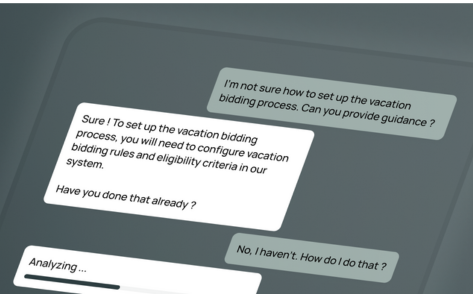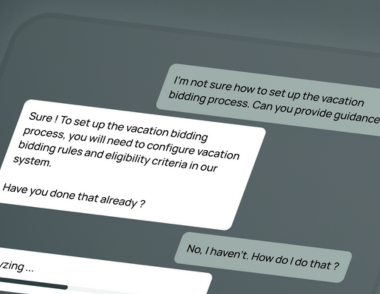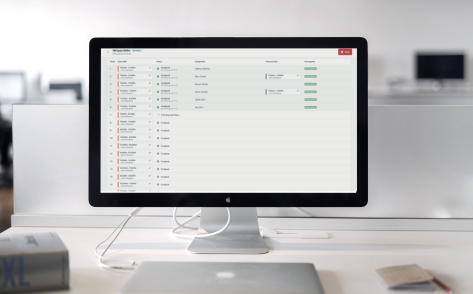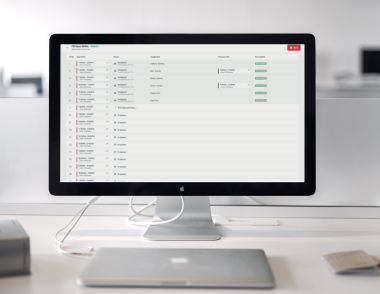Unlocking the Power of Automation: 5 Steps to Streamline HR Processes
Explore a five-step process to streamline your operations through automation. Discover how to identify needs, select the right tools, and ensure ongoing success.


MONTREAL, October 2023 - As HR professionals, you're well-versed in change management, but even the most experienced professionals can find it challenging to navigate the transition to automation. Whether you're looking to improve efficiency, reduce costs, or eliminate errors, automation can be a powerful tool for streamlining HR processes and making your job easier. In this article, we'll explore five steps you can take to ensure a successful transition to automated processes.
1. Identify the Process Requiring Automation
The first step in automating a process is to identify areas that would benefit the most from automation. This can include onboarding, bidding processes, or even employee performance evaluations. Take a look at your current processes and consider which ones are time-consuming, error-prone, or have a high volume of transactions. These are the processes that are most likely to benefit from automation. The key is to be specific and targeted because automation is not a one-size-fits-all solution.
Let’s use an example. At one of our clients in the airline industry, shift trade management had become a nightmare. Employees were submitting trade requests via email, leading to confusion and frequent scheduling conflicts. HR managers were overwhelmed with manual adjustments. The need for automation became evident as the errors and inefficiencies piled up.
2. Research Automation Tools
Once you've identified the process that needs automation, it's time to research the available tools. There are many automation tools on the market, so it's important to find one that fits your company's needs and budget. Consider the features offered, the cost, and the level of support provided.
Exploring feedback from organizations that have successfully adopted similar automation solutions can provide valuable insights. Reach out to the software vendor or service provider to request a demo and inquire about the tool's compatibility with your specific organizational needs
Continuing with our example, as you research employee self-service automation tools for the shift trade process, consider asking these vital questions:
- Can the tool be easily integrated with our current systems, and is it scalable to grow with our organization's needs?
- Does the tool include functionality for partial and full shift trade?
- Can the tool be configured to our specific needs and organizational rules?
- What security measures are in place to protect against data breaches and unauthorized access?
- Is the tool user-friendly and easy for employees to navigate when submitting or signing up for shift trades?
3. Implement the Automation Tool and Train Your Team
Effective implementation is key, and comprehensive team training is essential for the new tool. This ensures a seamless transition and alignment within the organization.
Transparent communication with employees is equally vital, emphasizing the benefits of automation. Equipping your workforce with the necessary training and resources clarifies the tool's impact on their work. A well-structured rollout plan, backed by a dedicated implementation team, ensures a smooth process. Don't hesitate to seek assistance from the company providing the solution, as it is the expert and can help ensure optimal usage of the product.
4. Continuously Monitor and Improve the Process
Automation isn't a one-and-done endeavor. It requires ongoing vigilance. Regularly monitoring the process and making adjustments as necessary is crucial to ensure it continues to meet the organization's and employees' needs. This involves assessing the tool's effectiveness, gathering feedback from employees, and implementing any required modifications to the tool or the process.
It's important to have a clear understanding of the key performance indicators (KPIs) and measure the success of the automation process. By consistently tracking these indicators, your organization can pinpoint areas where the process is performing effectively and areas that require improvement, enabling you to make necessary adjustments.
Returning to our customer in the airline industry, let’s look at some examples of KPIs they assess monthly for their shift trade process:
- Number of Automated Shift Trades: Track the number of shift trade requests that are successfully processed through the automated system. An increase in this number indicates successful adoption and usage of the system.
- Employee satisfaction: The level of satisfaction among employees with the shift trade process, as measured by surveys or other feedback mechanisms. Higher satisfaction scores indicate that the system is meeting employee needs.
- Cost Reduction: Calculate the cost savings achieved through reduced administrative work, fewer scheduling errors, and improved resource allocation.
- Shift Trade Approval Rate: Calculate the percentage of shift trade requests that are approved versus those that are declined. A high approval rate indicates efficient processing, while a low rate may signal issues with shift trade requests.
- Error rate: Calculate the percentage of shift trade requests that require manual intervention due to errors or discrepancies. A lower error rate demonstrates the system's ability to reduce human errors.
5. Reap the Benefits
Once you've successfully executed these steps, it's time to enjoy the fruits of your labor. Your team will gain the freedom to direct their energies toward what counts -- your people And, with more efficient processes in place, your company will be running like a well-oiled machine. With the right tool, you can take control of the chaos and streamline processes for both HR professionals and employees.
As for our customers, the benefits of automating shift trade management quickly became evident. Scheduling conflicts decreased significantly, employee satisfaction soared, and the overall efficiency of shift trade management improved. HR professionals and employees alike enjoyed a smoother, more streamlined process, all thanks to the power of automation.






